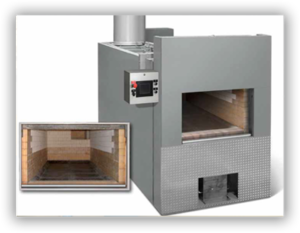Cremation retort installation is one of the most critical steps a facility will ever take. Whether you’re opening a new crematory, adding capacity to meet demand, or replacing aging equipment, the installation process is more than just setting machinery in place. It involves planning, permitting, infrastructure, and long-term operational considerations. For many first-time buyers or expanding facilities, understanding what to expect can eliminate stress, minimize costly mistakes, and help the project run smoothly. Below, we’ll walk through the crematory installation process step by step, covering timelines, permitting, costs, and common challenges, so you know exactly what lies ahead.
Step One: Planning and Site Preparation
Every successful installation starts long before equipment arrives at your facility. Proper planning ensures the cremation retort integrates seamlessly into your operations.
- Site Evaluation: Before committing, your space needs to be evaluated for structural load, ventilation pathways, and clearances. Cremation equipment is heavy and generates high heat, so reinforced flooring and adequate airflow are critical.
- Utility Requirements: Gas, electrical, and exhaust systems must meet specific specifications. Planning utility upgrades in advance prevents delays during installation.
- Zoning and Location Considerations: Municipalities often regulate where crematories can operate. Early discussions with local officials can uncover restrictions around property setbacks, stack heights, or environmental compliance.
At Cremation Systems, we help facilities evaluate these factors up front, providing layout drawings and technical guidance to align site design with operational needs.
Step Two: Permitting and Compliance
Permitting is one of the most time-consuming parts of the cremation retort installation process, but it’s also the most important.
- Air Quality Permits: Because cremation involves combustion, air permits are almost always required. These ensure emissions remain within local, state and federal standards.
- Building and Safety Permits: Installations typically require approval from fire marshals, building inspectors, and possibly state health departments.
- Environmental Compliance: Some jurisdictions request stack testing or ongoing monitoring.
Permitting timelines vary. Sometimes it takes weeks, other times several months. Facilities that underestimate this stage risk costly delays. Working with an experienced partner like Cremation Systems ensures that paperwork, engineering specs, and compliance documentation are properly prepared and submitted.
Step Three: Cremation Retort Installation Timeline
Once permits and site prep are complete, the actual installation begins. Here’s what most facilities can expect.
- Delivery & Placement (Day 1–2): The cremation retort is delivered and positioned using specialized equipment.
- Utility Hookups (1–2 weeks): Gas lines, electrical systems, and exhaust stacks are connected.
- Controls & Safety Checks (1 week): The control system, interlocks, and monitoring devices are configured.
- Testing & Commissioning (Several Days): The unit is tested under real conditions to verify safe, efficient operation.
Overall, the installation phase often runs 3–4 weeks, depending on site readiness and the complexity of the facility’s infrastructure.
Step Four: Costs and Budgeting
Budgeting accurately for cremation equipment means accounting for more than the furnace itself.
- Equipment Cost: Cremation retorts range widely depending on size, technology, and customization.
- Construction Costs: Flooring reinforcement, utility upgrades, and ventilation modifications can significantly impact the bottom line.
- Permitting & Fees: Air quality studies, inspections, and local permits carry costs that vary by state and municipality.
- Training & Maintenance: Ongoing staff training and preventative maintenance should be built into the long-term financial plan.
Step Five: Training and Operations
Once installed, the cremation retort isn’t ready to operate until staff are fully trained. Training typically covers:
- Safe operation of the controls
- Proper loading and monitoring procedures
- Maintenance protocols for refractory lining and burners
- Troubleshooting common issues
- Some States require additional qualifications, such as receiving a Crematory Operator Certification through established programs offered by CANA or the NFDA.
Hands-on instruction ensures operators can run the retort confidently and safely from day one.
Common Challenges
Even with planning, installations can hit bumps along the way. Some of the most common include:
- Permit Delays: We streamline applications and provide engineered drawings that satisfy regulators.
- Utility Limitations: Our team can recommend cost-effective upgrades or alternative configurations.
- Space Constraints: Custom layouts and modular options ensure equipment fits even in challenging spaces.
- Operational Downtime: For facilities replacing older equipment, we work to minimize downtime through careful scheduling.
Because Cremation Systems handles design, permitting support, manufacturing, and installation, we offer an actual turnkey experience that reduces stress and keeps projects on track.
Step Six: Long-Term Maintenance and Support
Installation is just the beginning. To maximize performance and lifespan, cremation equipment requires routine maintenance and periodic refractory repairs. Cremation Systems provides ongoing support through:
- Preventative maintenance programs
- On-call technical assistance
- Replacement parts and refractory services
- Renovation options for extending retort life
Next Step- Download the Crematory Installation Readiness Checklist
Installing a cremation retort is a complex process, but with the right partner, it doesn’t have to be overwhelming. From early planning and permitting to final commissioning and operator training, Cremation Systems guides you every step of the way. Facilities that invest the time to prepare properly, while working with a turnkey provider, set themselves up for a smooth installation and long-lasting operational success. Before you begin your project, make sure you’re fully prepared. Our Crematory Installation Readiness Checklist outlines every step of the process so you can move forward with confidence.
Would you like to see if your site is compliant? Fill out the form below to get your Crematory Installation Readiness Checklist and see if your site is compliant.
Ready to take the next step? Contact our team today or Request a Quote to see how we can deliver the solutions you need.
